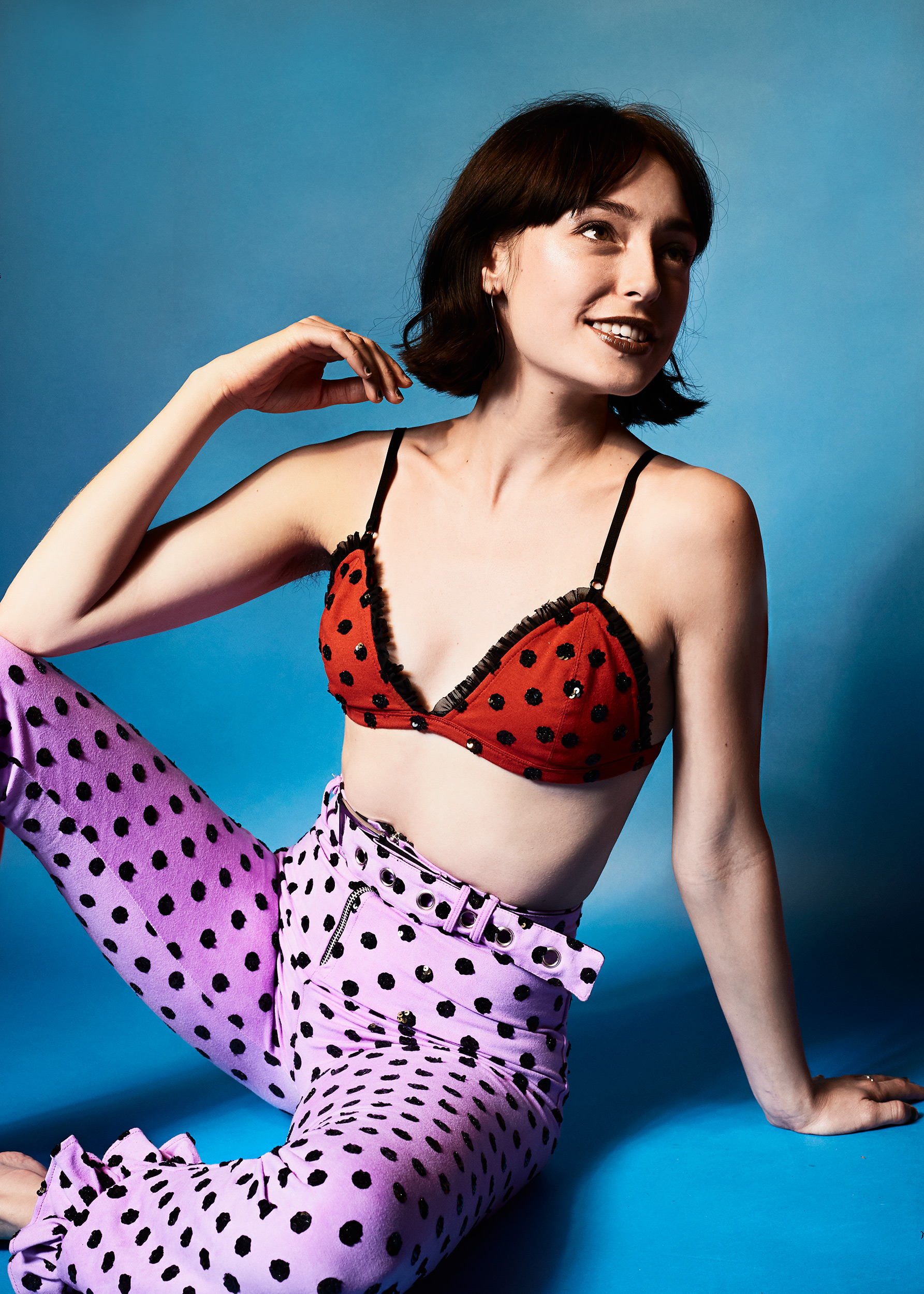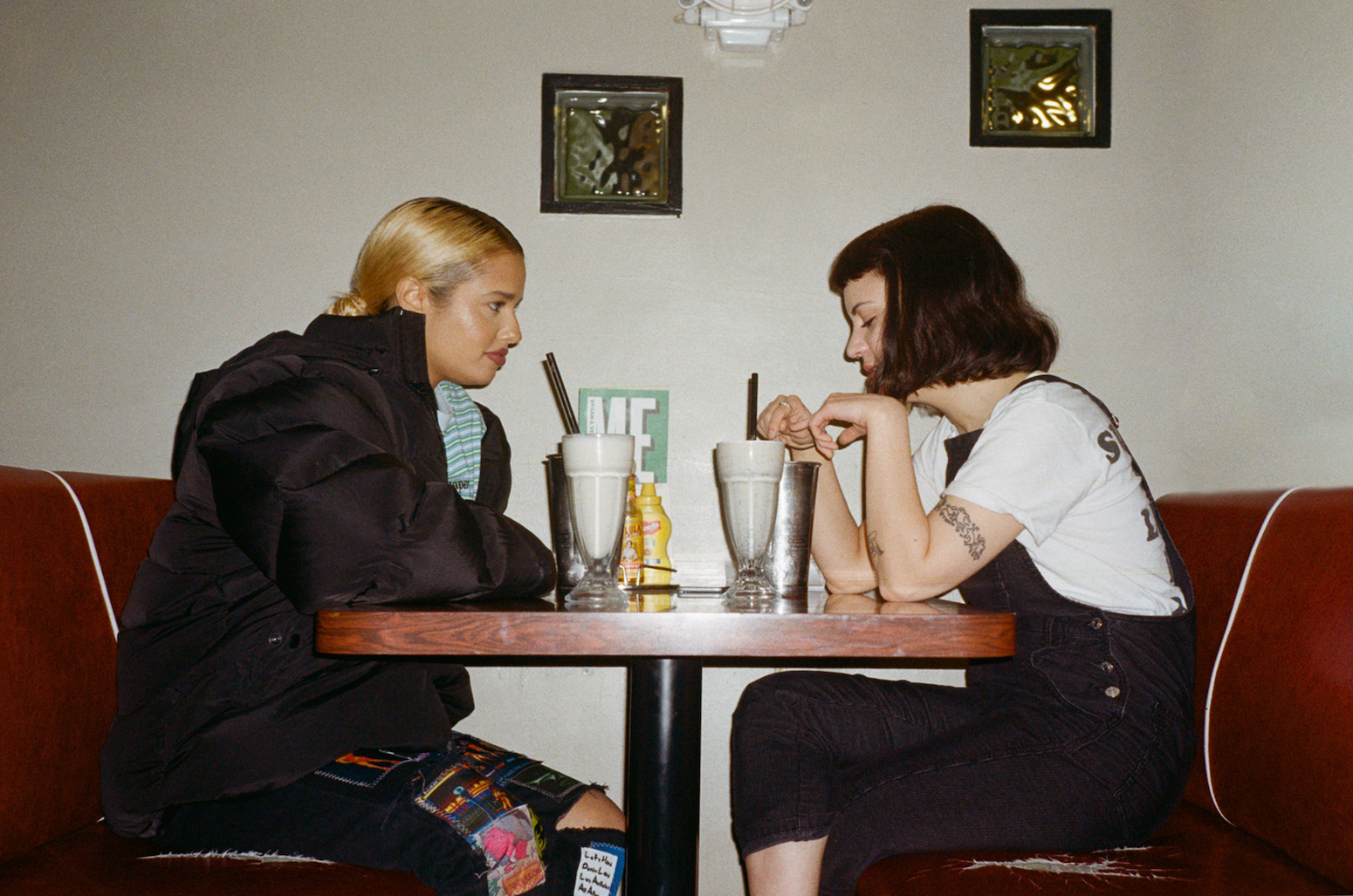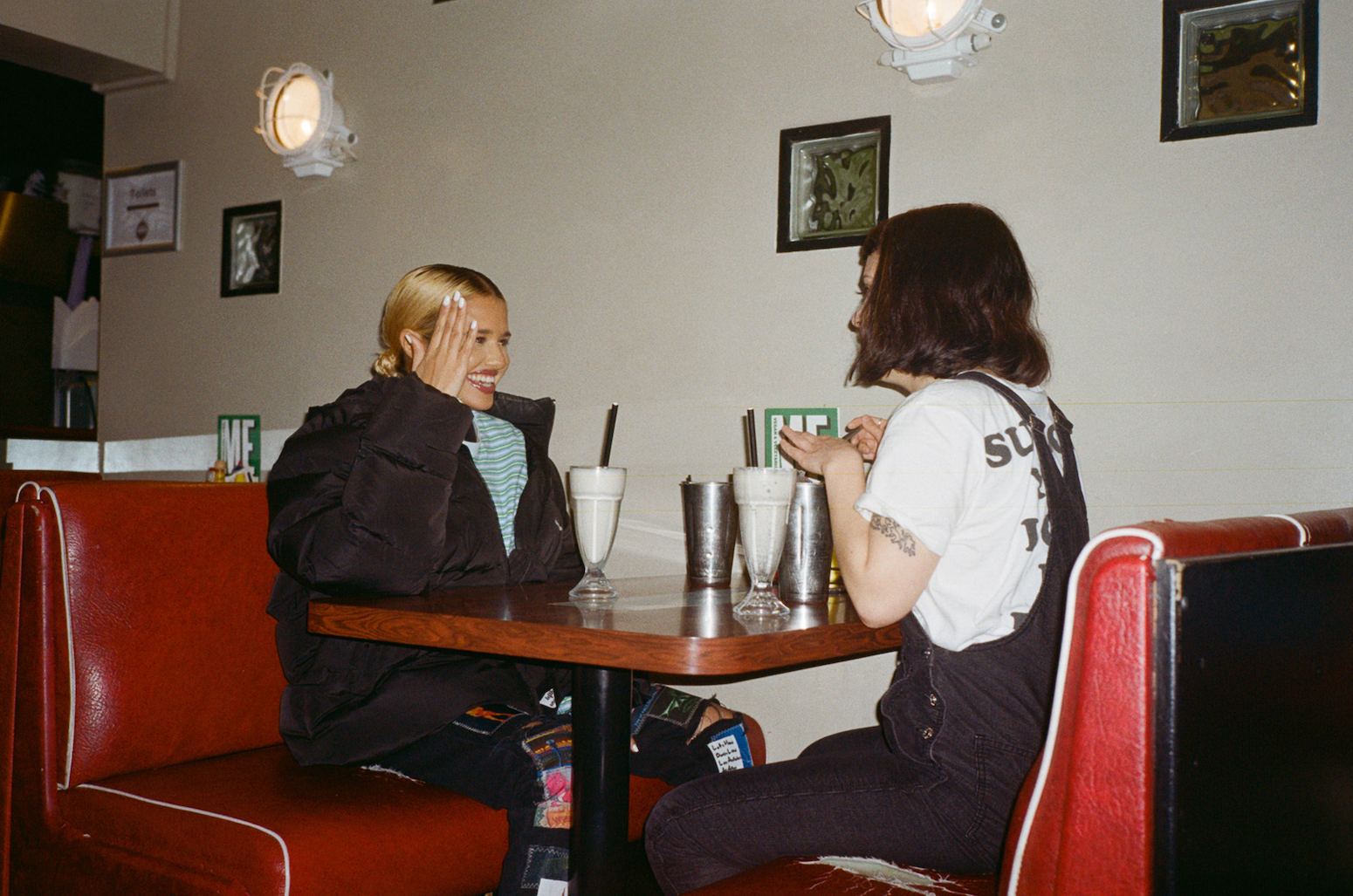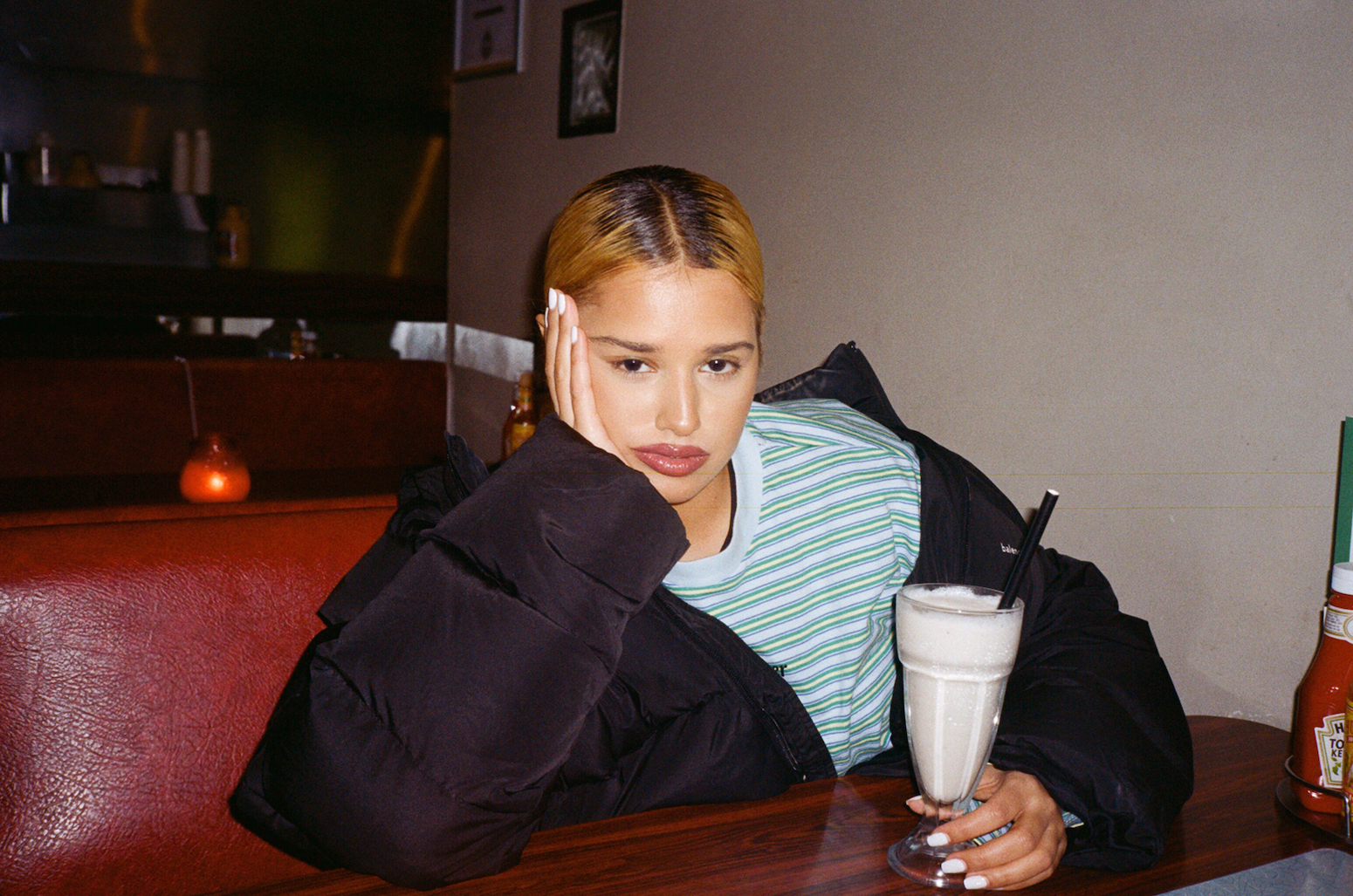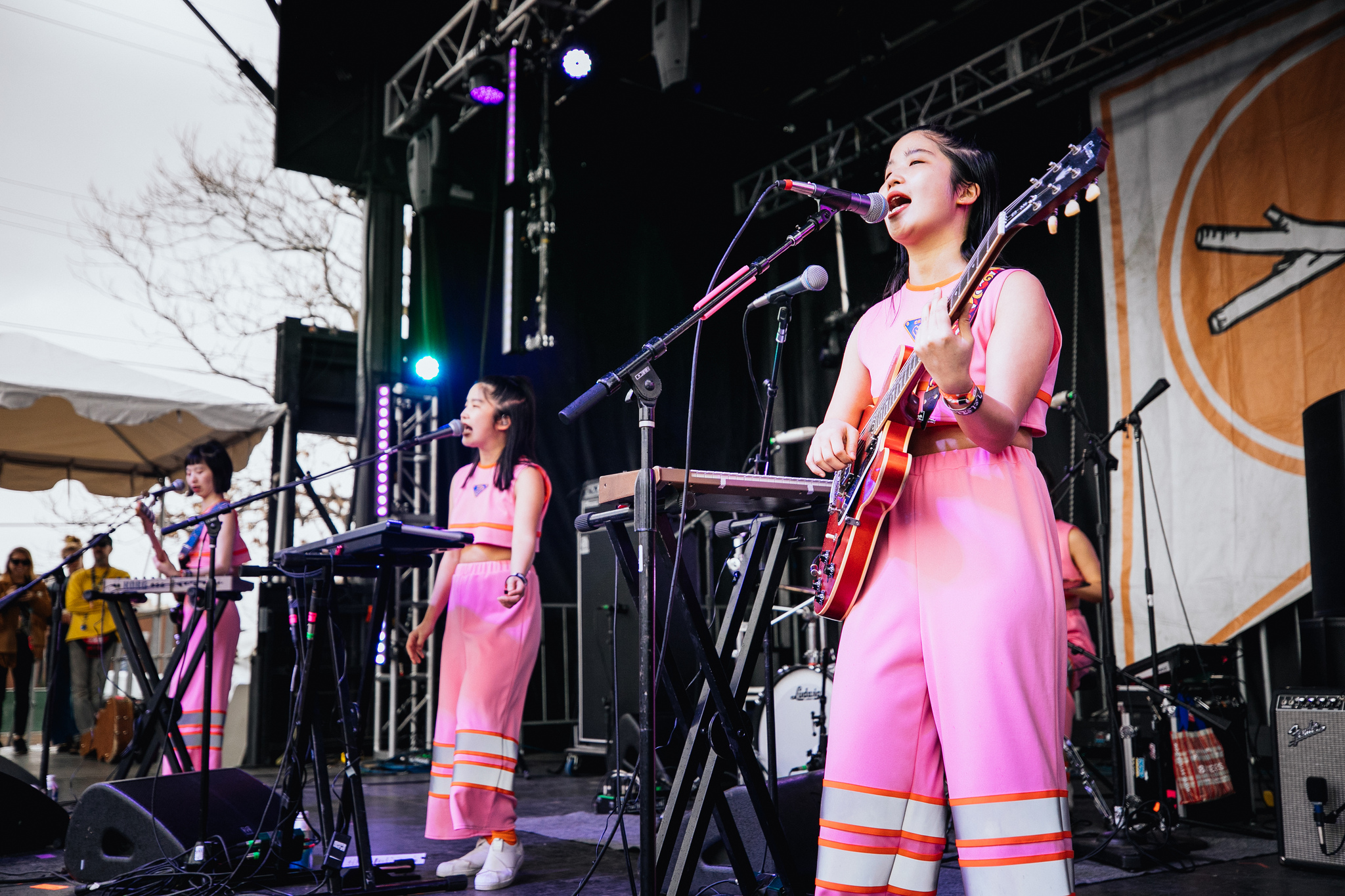Every week, the Noisey staff puts together a list of the best and most important albums, mixtapes, and EPs from the past seven days. Sometimes it includes projects we’ve written about on the site already; sometimes it's just made up of great records that we want everyone to hear, but never got the chance to write about. The result is neither comprehensive nor fair. We hope it helps.
Solange: When I Get Home
It would be a fool’s errand to attempt to untangle the threads of a dense, layered Solange record mere hours after it fluttered into the world, so I’ll keep it brief. Never has Solange sounded so comfortable as on these windblown productions that she made largely with longtime collaborator and ambience conjurer John Carroll Kirby. It sounded perfect when I listened in a uber home after a long night out last night, and I look forward to further settling into it, exploring it’s casual, quiet mysteries. —Colin Joyce
2 Chainz: Rap or Go to the League
“Never get the credit I deserve, I dunno If you’re hearing every word,” 2 Chainz spits on his new track “Threat to Society.” And he’s got a point! He contains multitudes; he’s much more than his punchlines, and Rap or Go to the League shows once again that 2 Chainz is the best in the league. This metaphor is fairly on the nose too—the album opens with audio of 2 Chainz being announced as part of the starting lineup at one of his high school basketball games.
Admit it though, you are here in part for punchlines and they’re still here. Example: “Spit cold shit, need Mucinex” on “2 Dollar Bill.”” There are also plenty of casual flexes (i.e. “got a pinky ring that cost $80k” on “Money in the Way”). Over the course of 14 tracks you get the bangers you’ve come to know and love from the artist formerly known as Tity Boi, as well as A+ features from your faves like Travis Scott, Ty Dolla $ign, and Ariana Grande, who recently did her best 2 Chainz interpretation on “7 Rings.” 2 Chainz has nothing to prove here, but Rap or Go to the League is solid evidence that though 2 Chainz had NBA potential, his greatest strength is making really good rap music. — Leslie Horn
Dijon: Sci Fi 1
In the video for “Bad Luck,” the handworn closer on the LA-based songwriter Dijon’s new EP, the whole city of Los Angeles glitters. It’s shot in such a way that every streetlight offers a lensflare, a sea of pearls on the night sky. On some level it’s everyday stuff, you know that no matter how nicely it shimmers, that fourth floor window is just a fluorescent bulb. But in Dijon’s eyes its fantastical.
You can apply that worldview to how Dijon writes in general, and especially to the songs that make up Sci Fi 1—he has this impossible knack for making tiny moments feel totally precious. He talks about luminescence specifically on “Cannonball”—”You’re magnified in light,” he sings at the song’s outset. But he also draws meaning out of other tiny images—the way a wide angle lens rests into a loved one’s hand on “Dog Eyes,” a memory of a staircase he used to run up. This is his biggest power as a songwriter, suffusing all of this with a delirious glow, making magic out of the mundane. You’ll be moved. —Colin Joyce
96 Back: Excitable, Girl
Across 12 tracks, he views dancefloor history through a prism—drawing new colors and shapes out of the resulting refractions. His music is often viewed within the long-tradition of Sheffield’s dancefloor experimenter—it’s where Warp Records, long-running institution of electronic auteurs, was born after all. On some level this is his heritage; his dad Matt Swift was a long-running party promoter in the city. But Excitable, Girl proves that 96 Back is more omnivorous than that. He does draw on what he’s called “poncey IDM” (you can hear some of that in the melodic contortions of “Matryoshka”), but on the whole it’s so much more open-hearted—hands-in-the-air even—than such influences might indicate. He’s got a knack for taking more academic forms and making them feel ascendant. —Colin Joyce, "96 Back’s Noisey Mix Is a Thoughtful Rave"
Scott Gilmore: Two Roomed Motel
Scott Gilmore says that what drives this record, and his music in general, is “a process of exploration.” He arrives at the studio clear-headed, with no plan and no expectations, keen to let the sounds dictate where a given piece might go. In the past, that’s meant a proliferation of wonderfully meandering pieces—loping jams that felt more about the journey than the destination. Two Roomed Motelfeels different though. The songs are still shimmery and diffuse—open and welcoming like those motel rooms— but the loose song particles have condensed into something a bit more song-shaped, a little more fully furnished. —Colin Joyce, "Scott Gilmore's New Album Is the Colorful Work of a True Tinkerer"
Octo Octa: For Lovers
These three long, dreamy tracks from the producer Maya Bouldry-Morrison is, as the title suggest, full of love for the people she holds close. “I Need You” is a slow-building house track built around a desperate yearning. “Bodies Meld Together” is flushed and headspinning, desperate with desire. “Loops for Healing” is a little more spacious—and perhaps less emotionally intense—but it’s no less textured and intimate. When talking about “Bodies Meld Together,” Bouldry-Morrison offered what seems to be statement of intent for the project itself. “Love is important and showing that love to your partners in important,” she told the Fader. “It lets you all become a stronger force together.” You can sense that care in every note. —Colin Joyce
Curved Light: Flow and Return
The crown jewel of the always reliable ambient label Constellation Tatsu’s new batch of tapes (all worth checking on their own merit, by the way) is this new collection of polychromatic compositions by the synthesist Curved Light. Most of the pieces on Flow and Return are pretty short, but the sequences are colorful and detailed, offering plenty of nooks and crannies to explore. You can get lost in the shimmer—even on short interludes like “Glacial Float—which makes it a suitable soundtrack for any inner travels you have planned in the near future. Listen close, then drift away. —Colin Joyce
Bob Vylan: DREAD
Their name’s a hair too cute, but the crushing music that this London band makes is anything but. Self-styled as a hybrid of hardcore and grime, they consciously crib the best bits of both on their new EP DREAD, rapping about isolation and fear over guitar parts that remind me at least a little of the chopped-not-slopped riffing that happens on labels like La Vida Es Un Mus. There’s a lot of artists working right now in the shredded space between rap and noise, but their take’s a little different—leaning more into sounds and energies that are consciously geared at opening the pit up rather than just straight-up crushing your skull. This only makes creaky, paranoid downers like “Die Slow” more impactful—there’s space for them to scream this shit right in your face. —Colin Joyce
Varg: Evanescence (A Love Letter)
The Microsoft Samantha monologue that opens the new record new record from Swedish producer/synthesist Varg ends with a promise: “this is anti-police music.” Some may find it hard to hear that in all the droney passages and relentless gasps, but I’m of a mind that this kind of borderless music is inherently anti-statist. It’s rule-breaking music, ignoring established forms in favor of meandering, blooming passages of melody and static, a radicalness underscored by the cast of collaborators here, which include both a rapper (Bladee) and a noise musician (Puce Mary), colliding on songs that are nominally ambient in nature. It should not be possible, but here it is. It’s liberated music, oriented toward doing the same for others. —Colin Joyce
Angel-Ho: Death Becomes Her
Although her new music is obviously "poppier"—you can hear the influence of artists like Missy Elliott, Grace Jones, and even Kanye West, for example—it is still intrinsically, supernaturally radical. “Pose” is built from sparse, warped electronic beats and punchy bars. “My music is pop, meets the death of pop, meets the death of identity, death of politics, death of everything,” Angel says, laughing. “It’s just a big funeral. It’s [also] the metal rocker chick in me. Metal and rock is so emotional and poetic, and I wanted to bring that sense of poetry into my album.”—Daisy Jones, "Angel-Ho Makes Genuinely Radical Electronic Music"
Durand Jones and the Indications: American Love Call
Durand Jones & The Indications draw from so many threads of soul music so expertly that both their attention to detail and affection for the genre elevate their sophomore LP American Love Call. Originally a creative vessel for friends studying at Indiana University’s Jacobs School of Music, the group has been steadily gaining traction thanks to their raucous live show, solid songwriting, and the one-two vocal punch of Jones and drummer Aaron Frazier. On the album, tracks like “Don’t You Know” feature a lush string arrangement that feel straight out of the Philadelphia Sound where the politically resonant “Morning In America” takes aim at injustice and congress. It’s reverent soul and never comes close to being just a pastiche of a bygone era. —Josh Terry
Glued: Cool Evil
The debut full-length from St. Louis four-piece Glued hits with a nervy and brooding immediacy. Opener “Used To It” is anchored by drummer and lead singer Chelsi Webster, who imbues a bracingly cynical energy throughout with snarling lines like, “will somebody do something? We never heed the call.” The title track, which features vocals from Sean Ballard, highlights the band at their best as it ends with a spiraling and visceral riff. It’s anxious and angular indie rock that can turn from infectious (“Beach Boys”) to menacing (“No Past”). —Josh Terry
Mereba: The Jungle Is the Only Way Out
The Jungle Is the Only Way Out, Mereba’s debut album, is a 38-minute getaway with the power to transport you anywhere Mereba sees fit. Lyricism is the core of the album, as she fills the spaces of the 13-track project with soulful melodies, fast-paced raps, and spoken-word interludes so sharp they sting. “Black Truck,” the only song she didn’t assist in producing herself, bleeds into the poetry of “dodging the devil.” “You stuck dodging the devil the older you get / Youth grants grace, growth grants grit,” she says. If The Jungle Is the Only Way Out, Mereba knows she’s going to have to fight her way to the exit.
Westkust: Westkust
Sweden’s Westkust make lovingly rendered shoegaze that’s simultaneously gorgeous and pummeling, like all good shoegaze. Featuring members of Makthaverskan, the group follow-up their 2015 debut Last Forever (which featured their breakout single “Swirl”) with a lean nine-song collection that rarely wastes a moment or a fuzz pedal. Single “Cotton Skies” is washed with sawing guitars and floating, whimsical vocals from Julia Bjernelind while “Do You Feel It” answers the question with searing distortion. The whole LP is astoundingly sunny, with good vibes emanating from each of these fuzzy pop songs. —Josh Terry
Nonlocal Forecast: Bubble Universe!
Angel Marcloid—a nominally Chicago-based netizen who’s made a handful of incredible and incredibly difficult to categorize records as Fire-Toolz Angelwings Marmalade—introduces a new project indebted to the chintzy jazz they play during station breaks on the Weather Channel. Her take celebrates these sounds—keyboard lines that flutter enthusiastically like birds trapped in a Best Buy, sax-like synthesis, and gated reverb galore—but makes them a little more fantastically. There’s proggy drum breaks, sunny new agey passages, and jittery melodic contortions, the sound of a world a lot more surreal than ours. Catch it during Local on the 8s in the Jupiter Ascending universe. —Colin Joyce
This article originally appeared on Noisey US.


![Rapper Little Simz in London 2019]](http://video-images.vice.com/_uncategorized/1551781212479-plain-simz2.png)

